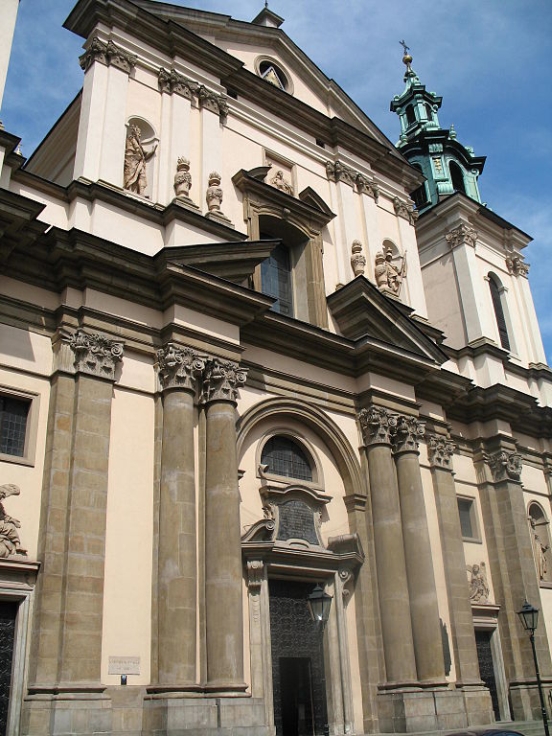St. Anne’s church is the main temple of the university quarters. The first Gothic church erected at this location burnt down in 1407. It was rebuilt by Władysław Jagiełło. At the turn of the 17th century another church was built here, this time purely Baroque in style, designed by Tylman from Gameren (who drew inspiration from S. Andrea della Valle church in Rome). St. Anne’s church is sometimes called the most beautiful Baroque temple in Poland. The interior is stylistically intact and unaltered so the integrity of the design can be fully appreciated. The beautiful stuccos adorning, among other places, the ceiling of the main nave and so called side-aisles were authored by famous Baltazar Fontana. In the main altar we can see St. Anna accompanied by her daughter Mary and Baby Jesus. The mausoleum of St. John Cantius (Jan of Kęt) is also an important part of the church – he was one of the saints whose sheer number in the 15th century Kraków decided that this period was dubbed “Kraków’s Happy Age” (“Felix Saeculum Cracoviae”). St. John is the patron saint of the students and the university. He was a professor there, famous for his good will and compassion which spawned numerous legends still popular to this day. His casket rests on four figures allegorically depicting four faculties of the university and is surrounded by four pillars crowned with depictions of four different St. Johns.
The mausoleum of St. John Cantius (Jan of Kęt) is also an important part of the church – he was one of the saints whose sheer number in the 15th century Kraków decided that this period was dubbed “Kraków’s Happy Age” (“Felix Saeculum Cracoviae”). St. John is the patron saint of the students and the university. He was a professor there, famous for his good will and compassion which spawned numerous legends still popular to this day. His casket rests on four figures allegorically depicting four faculties of the university and is surrounded by four pillars crowned with depictions of four different St. Johns.
St. Anne’s church also includes a prominent epitaph to Nicolaus Copernicus. When it was made his works were still on the list of books banned by the Catholic Church, so the wardens of the church showed quite a bit of courage by ordering its creation.
Another interesting thing to look for is an expressive example of Baroque illusion painting – by the pillars of the main nave there are “statues” of the Apostles which, upon closer examination, turn out to be just paintings posing as sculptures. Even more deceitful are the vertical grooves in the said pillars – they convey the impression of depth convincingly despite just being painted on the surface. That kind of interior decoration was very common at the time.